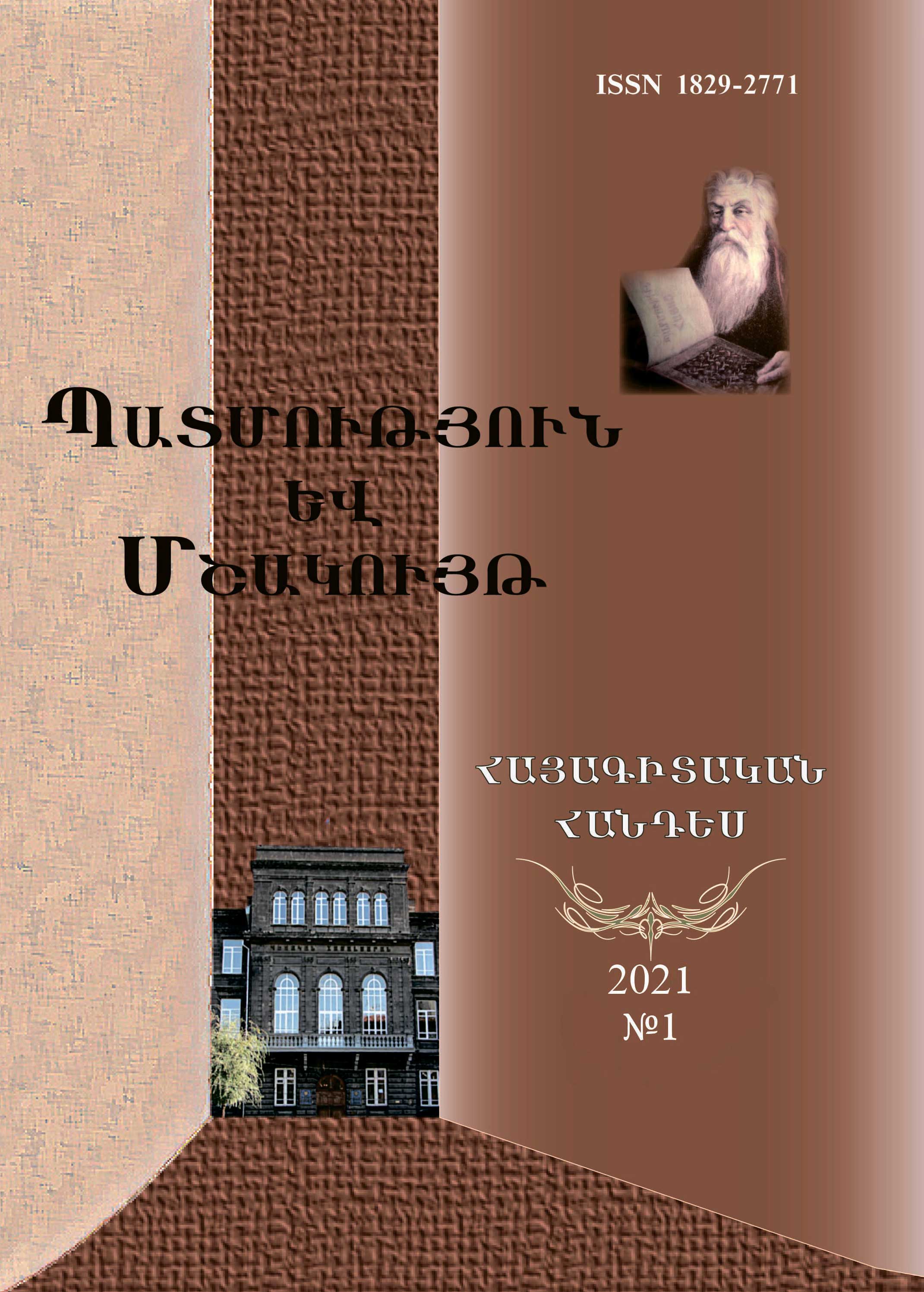Peculiarities of the Agreement between the Sentence Parts and its Expression in Kirakos Gandzaketsi’s “History of the Armenians”
Keywords:
Kirakos Gandzaketsi, 13th century, “History of the Armenians”, agreement, Grabar, Middle Armenian, subject-predicate connection, modifier-modified lexical unitAbstract
The present paper addresses one of the ways of connecting sentence parts, i.e. the agreement, and its expression in the “History of the Armenians” by the remarkable Armenian historian of the 13th century, Kirakos Gandzaketsi. Before referring to the characteristics of the sentence structures found in the work of Gandzaketsi, the overall syntactic picture and the agreement peculiarities between the sentence parts in Old (Classical) Armenian (Grabar) and Middle Armenian (Cilician Armenian), as well as the differences existing in the above-mentioned stages of the language development are briefly presented. Afterwards, the reflection of the latter in the aforementioned work is discussed in detail. Even though Kirakos Gandzaketsi lived and worked in the period during which Middle Armenian was in use, mainly Old Armenian/Grabar syntactic patterns are observed in his “History of the Armenians”. The agreement between sentence parts is expressed mostly in accordance with the peculiarities of the syntactic system of Old Armenian/Grabar. However, the historian who lived and worked in the Middle Armenian period was predominantly guided by the grammar patterns of Old Armenian/Grabar. This is explained by the fact that Kirakos Gandzaketsi, being a historian, represents the branch of historiography, and thus referring to the history of a certain period, should remain close to the spirit of the very period, including the peculiarities of the grammatical system. As for the agreement between the word combinations found in the work at issue, it should be noted that here again Kirakos Gandzaketsi followed the grammatical patterns of Old Armenian/Grabar. Examples of the connection of both the main and secondary parts of the sentence, in which the patterns of agreement typical of Old Armenian/Grabar prevail, are identified in the whole work.
Downloads
Published
Issue
Section
License
Copyright (c) 2021 Lilit Hakobyan

This work is licensed under a Creative Commons Attribution-NonCommercial-ShareAlike 4.0 International License.

